– Holger Biermann, lowbeats.de
Translated from German.

The AC-4 manages this in many situations and is not expensive at all at 850 euros
LED power supplies, refrigerators, TVs, routers: there are dozens of consumers in our households who ensure that the electricity is not always as clean as we would like it to be. This is more or less irrelevant to many household appliances, but only very few of the hi-fi components trimmed for the best sound have built-in effective power filtering and therefore run below their potential in poor power conditions. The digital specialist NuPrime has now drawn conclusions from this: Its active mains filter Nuprime AC-4 is supposed to effectively keep the disturbers out of the sound…
LowBeat’s colleague Raphael Vogt is completely unsuspected of falling victim to any high-end voodoo theme. And when it was decided at the editorial conference that he should test a mains filter (the Gordian from Lab 12 ), his skeptical eyebrows rose at first. But then, as usual, he went about it in a highly professional manner: He interviewed the public electricity suppliers (and found out that the electricity to the house is usually pretty clean) and put the device through its paces – and then bought it. Since then, his entire system has been carefully current-filtered.
So it makes sense to delve into the topic. At LowBeats we have different listening rooms in different circuits. And the “degree of pollution” also changes with the time. A difficult field. If the current is really clean at 230 volts and is not modulated by any switching power supplies, listening without a mains filter is of course better. But when do you ever have “pure” electricity?
For a while I used the so-called network noise analyzer from IsoTek (Blue Horizon) and used it to “analyze” practically every socket in our rooms. I don’t know what exactly analyzes there, IsoTek boss Keith Martin is silent on that. But the result was devastating. I almost always had a full deflection that wanted to say to me: Please use the mains filter. Which I then did – with the IsoTek EVO3 Aquarius . This ensured that the analyzer stayed in the green range and usually made the sound pattern quieter, more velvety.
The concept of the NuPrime AC-4
And that brings us to NuPrime, or rather to the NuPrime AC-4. Of course, the US digital specialist with production facilities in Taiwan also has problems with its sophisticated components with the completely different power states of its buyers worldwide. He therefore developed efficient filtering for the large DAC preamp called NuPrime Evo One and then thought: why not make the concept accessible to other components as well?
The NuPrime AC-4 line filter was born from this question. Looks like a classic hi-fi device, is processed like a hi-fi device and weighs almost as much at 3.2 kilos. NuPrime itself calls the AC-4 a “conditioner” – which is not entirely correct. Because the AC-4 only filters; a conditioner (as we know it from Accuphase or Burmester) actively generates a clean supply voltage and needs the power of a large output stage for this.
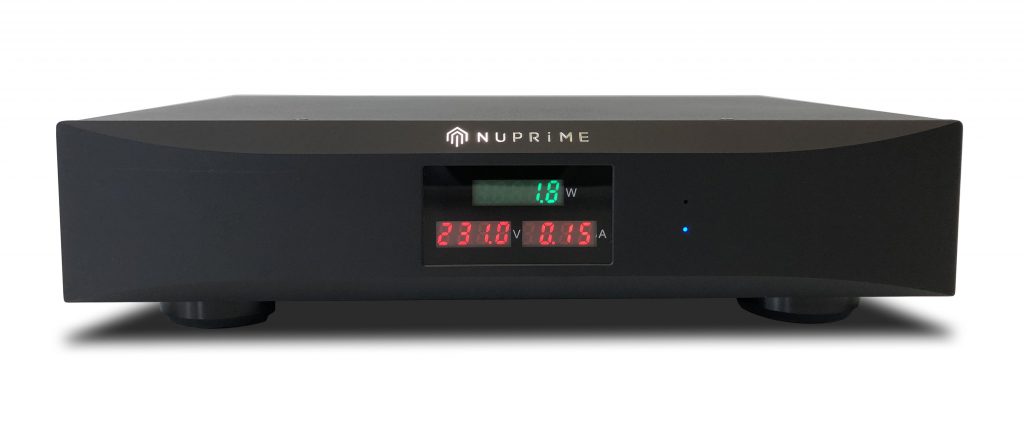
The AC-4 is designed for – you could have guessed it – four connected components. However, it is more like 2+2 connections, because they are designed for different applications and also filtered differently: two connections for large power consumers, two for smaller power requirements.
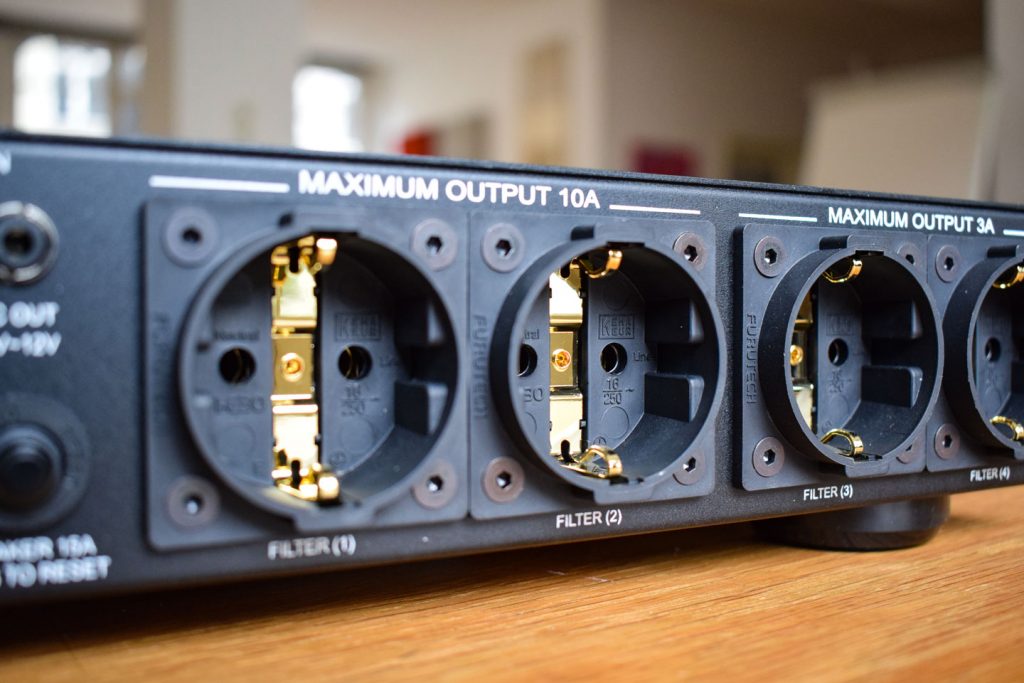
But it’s not just the power requirement, the filtering is also completely different. According to NuPrime, the two source device connectors have a 7th order LC filter that was specially developed for devices in this category. Filtering backwards is also important, especially with digital components – i.e. what digital pollution is generated by CD players, streamers and the like and fed into the network? There are quite a few specialists who claim that these digital polluters in the system are the biggest problem. Such a complex mains filter strip as the NuPrime AC-4 must of course also filter out this “dirt”.
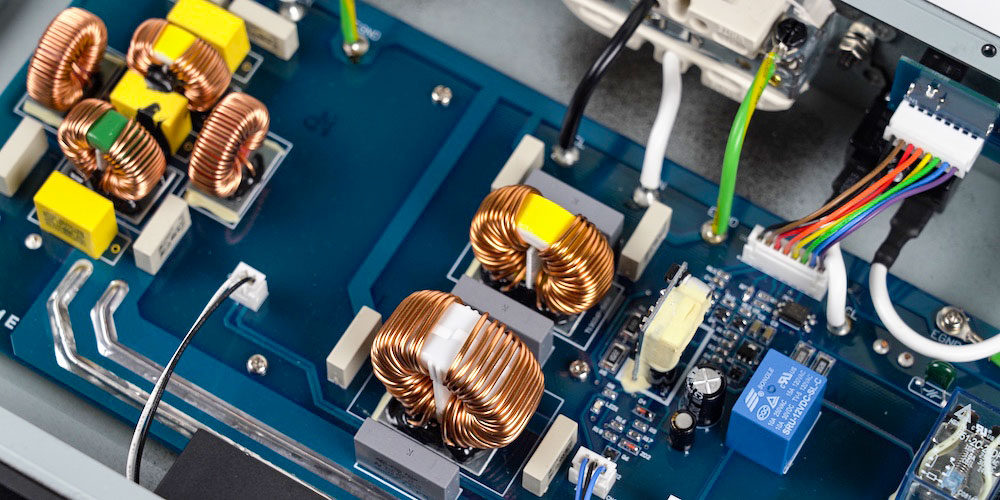
NuPrime is silent about exactly how the filters work. A pity. And four cans in total doesn’t seem to be that much: Turntables, phono stages, streamers and possibly CD players usually need to be supplied. Here, however, the solution is obvious: For the small power consumers, you can easily plug a “normal” strip into the AC-4 and thus increase the number. The filter effect is retained. And what is also part of the system: a surge protector holds your hand protectively over your high-end sweethearts…
The equipment of the NuPrime AC-4 is also really great. It starts with the gold-plated, really excellent (and damn expensive) Furutech FPX power sockets, which offer the plugs the best contact and a good hold. There is also a trigger input and output to be able to switch the AC-4 on and off together with other NuPrime components. The display on the front, which provides precise information about the current mains voltage, current and power output, is very eye-catching and useful.
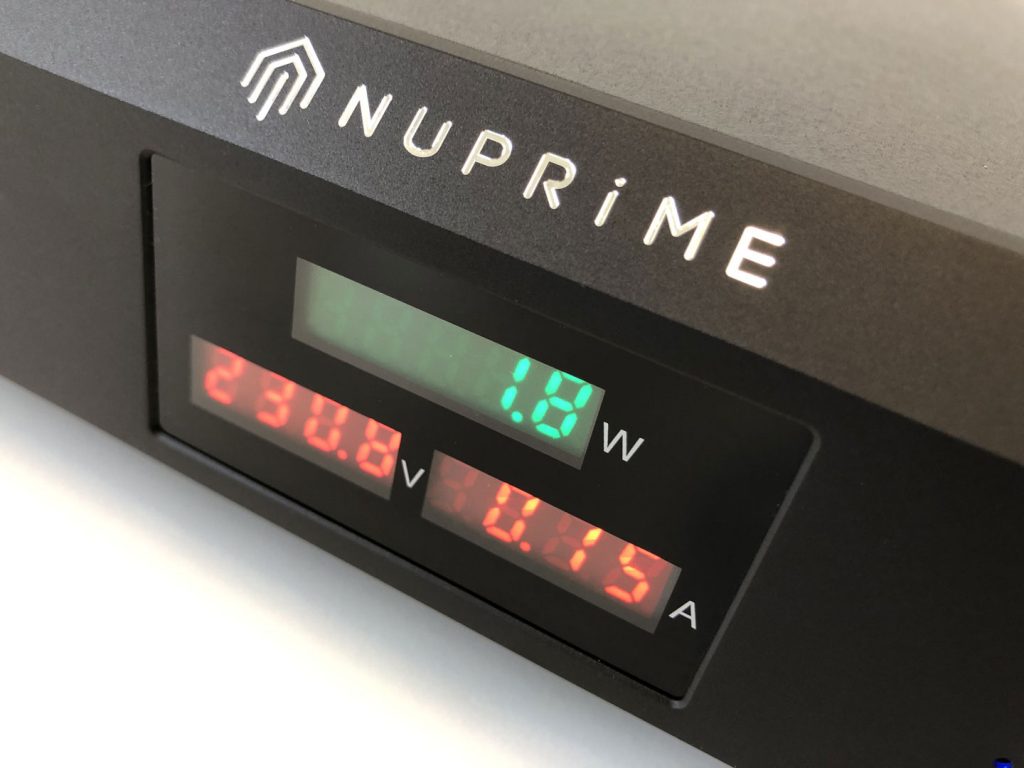
However, the colors of the LEDs are quite bright, so that you can see it well from a distance. If you like to listen to music with dimmed lights, this is annoying. But because you don’t need this information all the time, the display can be switched off with a switch on the back.
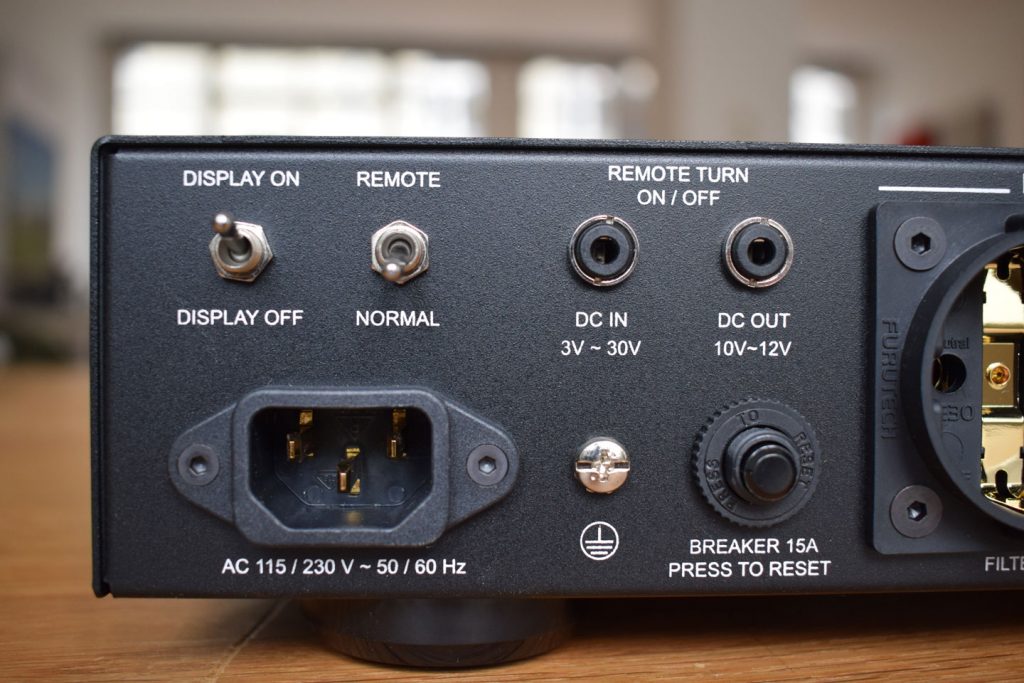
And another plus of the AC-4: Not only is it top-quality and very compact, but it also looks somehow sophisticated. The massive, curved front is at least once unusual in this price range.
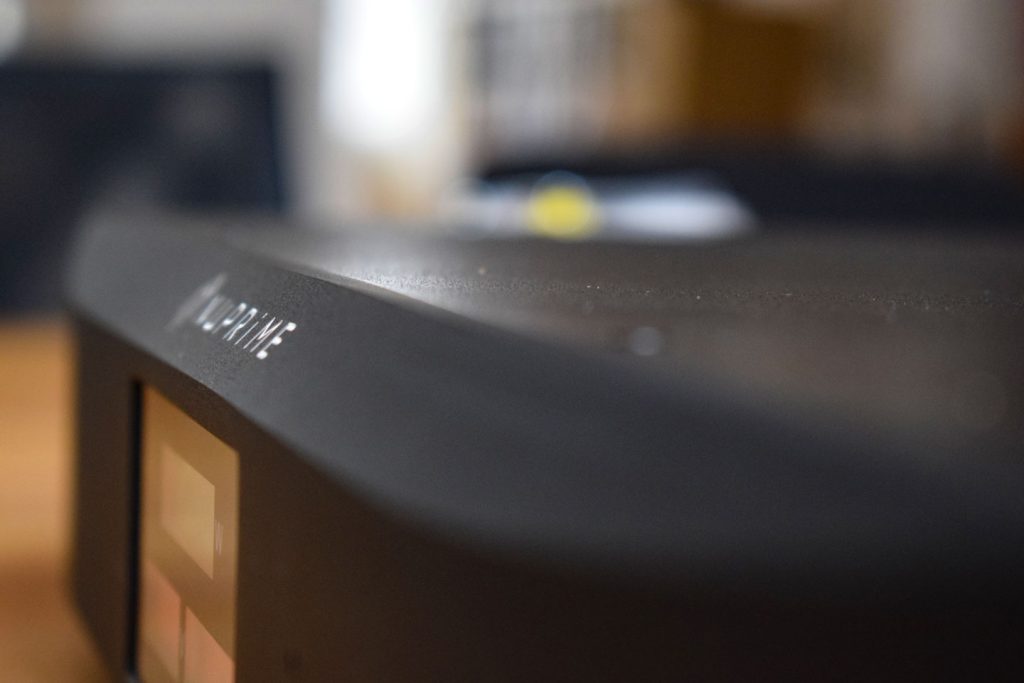
The hearing test
As is usual with these tests, it has to be carried out at several locations and in different facilities. I did this. That means: the AC-4 has had to prove itself at home, in the small LowBeats listening room (picture) as well as in the large one on different components. It was amazing that its use could be clearly heard in all three configurations. As described above, it was the same with the IsoTek EVO3 Aquarius . However, the AC-4 sounds different: the IsoTek makes everything a little quieter, the NuPrime makes the sound slimmer, finer and mostly more plastic.
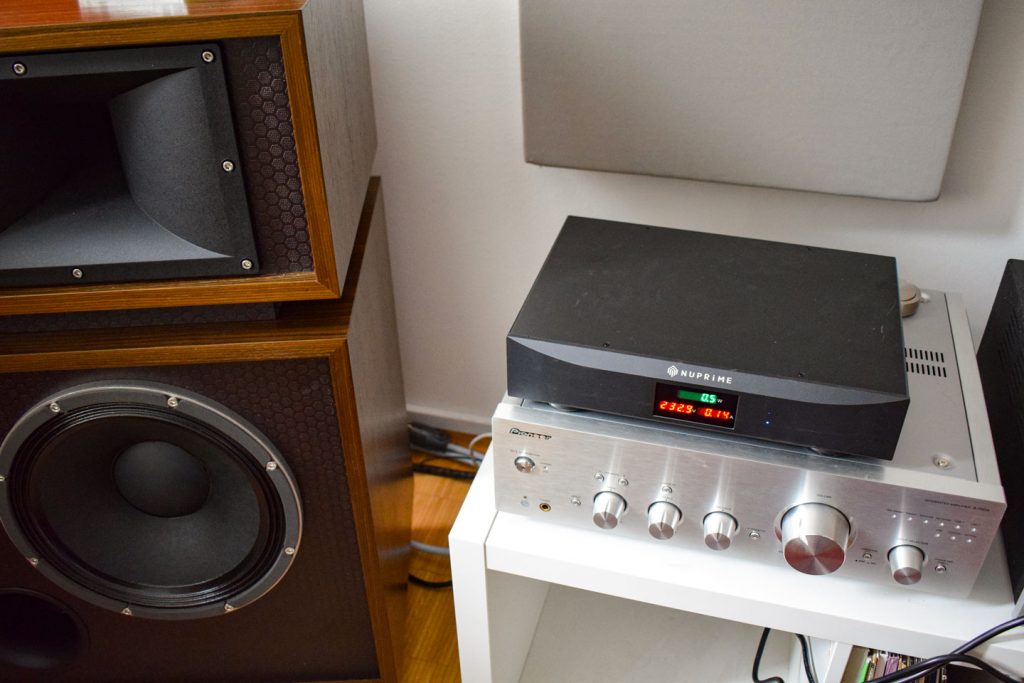
With the really well received Unplugged Live (in Melbourne) album by Courtney Barnett, the applause already sounds very good. Then that somehow brittle voice of Courtney Barnett. With the AC-4 mains filter, the applause sounded finer, more correct and the voice also finer and much more vivid. The guitar also seemed more three-dimensional. Overall, I had the impression of an increased spatial depth, albeit only slightly. I would not have expected such a clear mode of action – especially since I was able to reproduce this result in all three test situations.
But this high is not entirely without side effects either: the AC-4 makes it finer and more plastic on the top, but takes some energy out of the bottom. In the usual listening test pieces from Infected Mushroom, Yello & Co, the basses seemed a bit slimmer and minimally slowed down in contrast to listening to music without a filter.
For my part, I can live with this limitation; I prefer bony bass to rich. But that’s a matter of taste. The bottom line is that the AC-4 was and is a real step forward, especially in the small LowBeats listening room, and I’ve only been listening since the test.
Conclusion
Good for those who have hardly any mains pollutants at home and therefore do not need a mains filter. But such an ideal situation is rare: I recommend everyone else to try the NuPrime AC-4 at least once. The thing weighs just 3.2 kilos; that is sent quickly or the retailer around the corner will be happy to borrow the smart filter for a while. I’m afraid you’re like me: in the end he’ll stay.
However, the NuPrime AC-4 also makes it easy for the user: It is a smart and compact device that offers efficient overvoltage protection and is – in my opinion – extremely fairly priced at 850 euros.
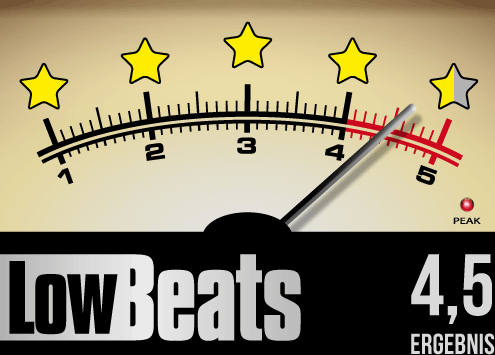
Link to the review --> https://www.lowbeats.de/test-filter-steckernetzleiste-nuprime-ac-4/

